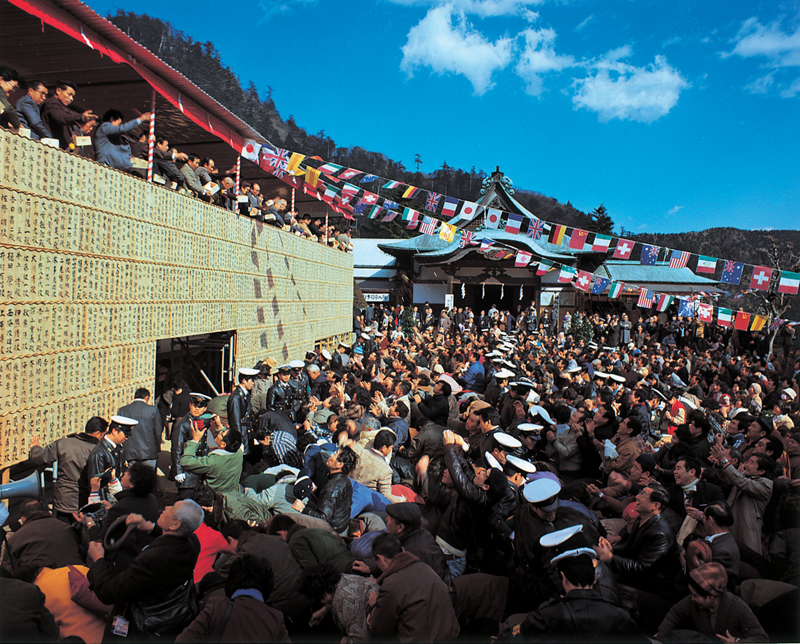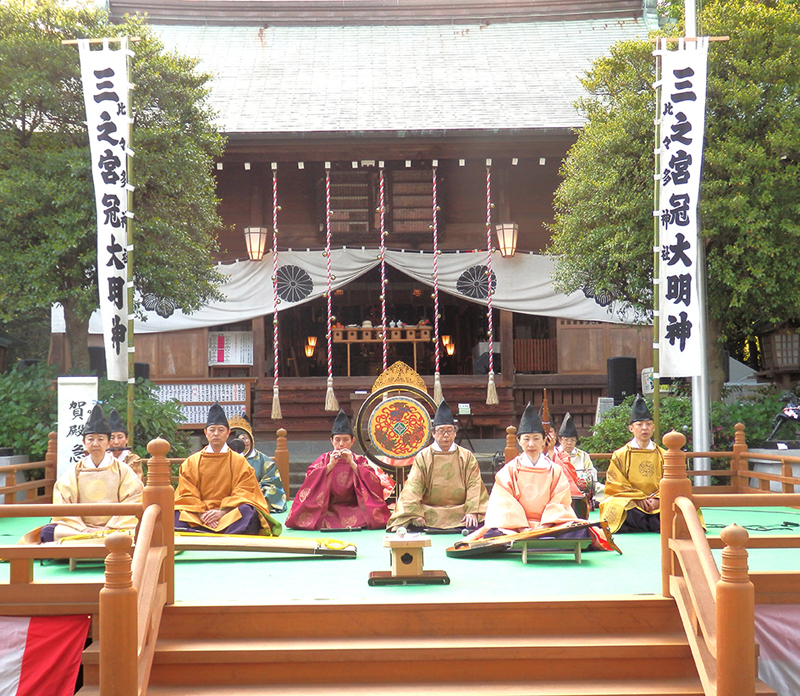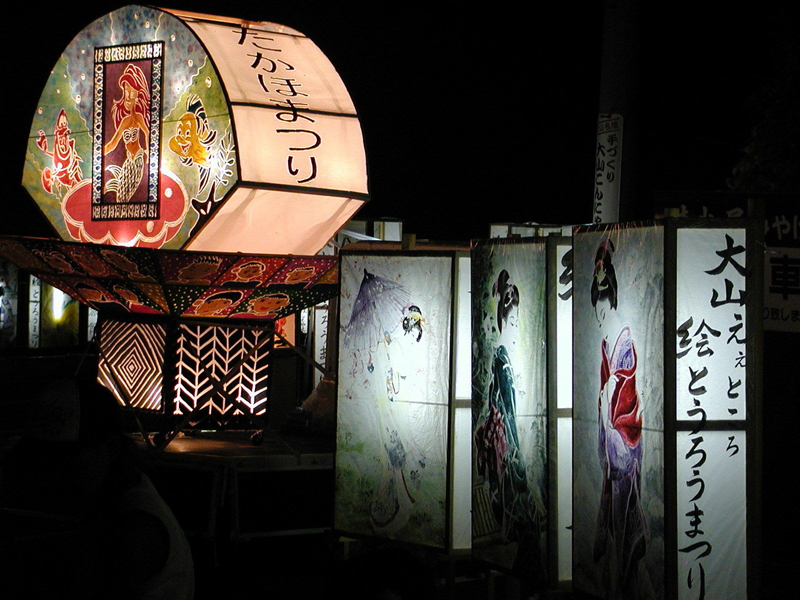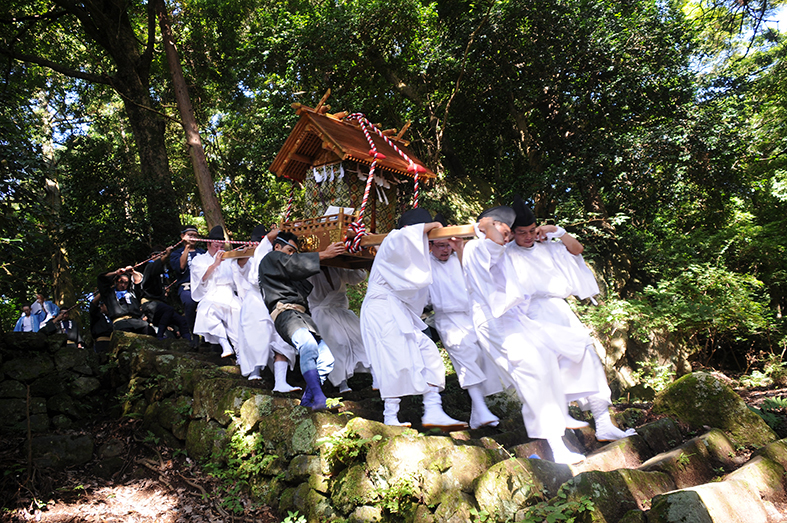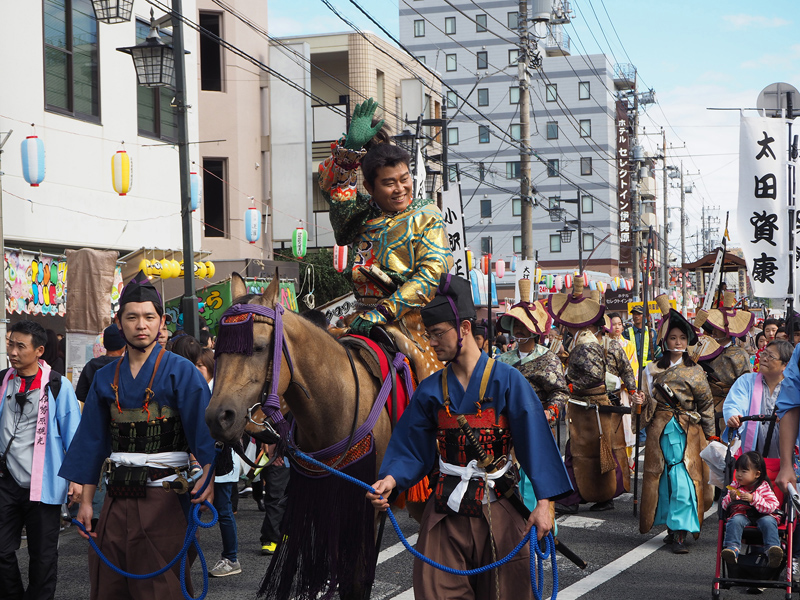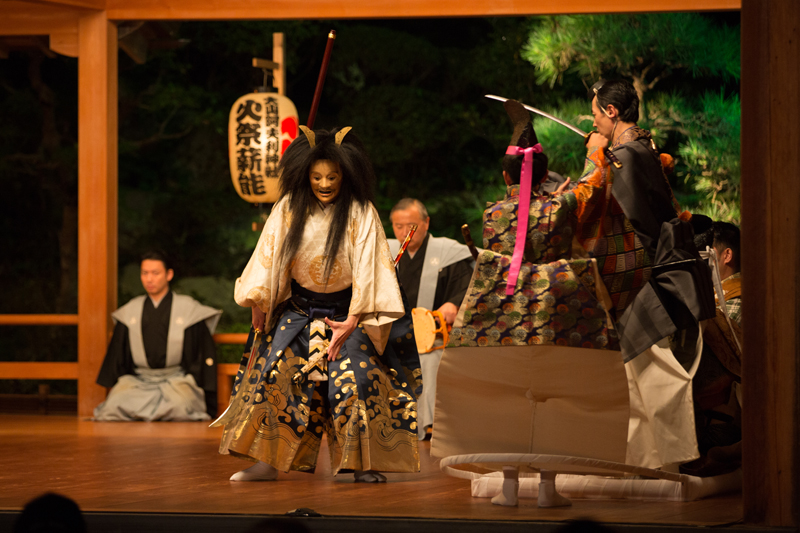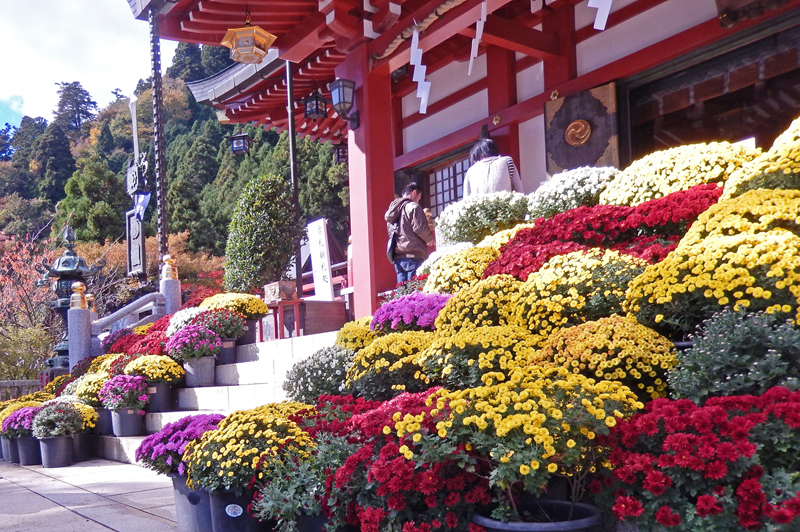Setsubun Festival
The festival(Setsubun-sai) is held every year on the day before the beginning of Spring. (February 3rd)
Oyama-Afuri, Sannnomiya-hibita, Isehara-Daijingu, and other shrines open the festivities with a grand celebration. Various celebrities are invited to attend, and gifts are distributed to the crowd.
Annual Spring Festival (Hinata-Yakushi)
Hinata-Yakushi is one of the three famous Yakushi temples in Japan and holds a traditional, stately festival on April 15 each year.
Also presented are Shigi-nobori (praying for safety) which is performed by a specially, trained/self-taught priest (Shukensha) with fire walking (hiwatari) and a ceremony showing a Buddhist image (honzon-okaicho).
The Shukensha, wearing yamabushi outfits (of mountain ascetic hermits) appear blowing conch shells after purifying in four directions using bows and arrows. They climb in trees five meters high and pray for fulfillment of religious discipline.
This festival is listed as one of the 50 Kanagawa Festivals.
Annual Spring Festival (Hibita Shrine)
Praising God for harvest and creation of the land has been a very popular festival for many years.
This large festival, called Sannomiya Matsuri began in 672 (year of Hakuho 4) and is held once a year.
Mikoshi is carried with brave shouting voices along with a festival car carrying decorative mechanical doll figures such as Kato Kiyomasa, Kumagai Jiro Nazane and Sendai Hagi no Otokonosuke. This takes place within the boundaries of the shrine district. A variety of stalls selling plants and flowers are additional attractions to the festival.
This festival is held on April 22 every year at Sannomiya Hibita-Jinja.
Magatama Festival
This festival of culture and art is held at the Sannomiya Hibita Jinja.
The festival is derived from the excavation of an ancient magatama making studio in the area. A large number of necklaces made of magatama (comma shaped beads) were found.
The festival includes musical events of wind and string instruments (kangen), along with traditional Japanese court music accompanied by dancing (bugaku) and dedicated dancing and performances. Other events held by a total of 30 groups include an old-style lottery and magatama workshops.
Oyama Illustrated Lantern Festival
A beautiful three-kilometer long light corridor is created on the approach to Oyama.
Every year, the lined-up lanterns are created with uniquely patterned paintings as well as handmade milk carton lanterns made by elementary and junior high school children.
Please enjoy the light competition in Oyama, held on summer nights in the middle of August every year.
Annual Autumn Festival (Afuri Jinja)
This Festival, in the Oyama district, began in the Edo period and is held every August for three days beginning on August 27th.
This festival is held under collaboration of 6 towns aroud Oyama, and it has been a magnificent festival. The festival begins when the mikoshi (portable shrine) is carried down (osagari) from the Afuri-jinja Shimosha shrine. It passes down the steep slope called otoko-zaka.
During the festival, a Japanese dance (yamato-mai) and a maiden shrine dance (miko-mai), which were handed down from a priest family from the Nara Kasuga Taisha shrine in the early Meiji period, are performed. Other performances such as Noh and Kyogen are also shown on a Noh stage. In the evenings, mikoshi from each town is carried around. On the final day, to close the festival, the mikoshi is carried up (oagari) with a parade and returned to the Shimosha shrine.
Dokan Festival
This festival is named for Ota Dokan, a warlord who worked for the Edo Castle Foundation and passed away in Isehara.
This is the largest festival in Isehara-city, not only do people from neighboring municipalities come, but also many visitors from other prefectures come to enjoy this festival. Main events, held every year include Dokan’s Go Hawking and the Hojo Masako Hinata Yakushi Temple Worship Parade. Popular actors and entertainers dressed as Ota Dokan and Hojo Masako perform at this very crowded event.
Many performances of singing, dancing and other entertainments and events are presented at various places in the city. The two full days of lively events are held every year in early October.
Oyama Himatsuri Takigi Noh
This Shinto entertainment has been handed down in Oyama for 300 years. It is listed as an important cultural asset of the city.
A shrine maiden wearing a hakama dedicates a sacred fire, the beacon is burned in silence. A subtle and profound world is created against the background of nature.
This festival is held each year in early October at Noh theater of Oyama Afuri Jinja.
Oyama Kiku (Chrysanthemum) Festival
Every year, members of the Chrysanthemum Association of Oyama donate their chrysanthemums to the Oyama Afuri-jina Shrine. The dedicated flowers are displayed at the Oyama Afuri-jinja Shrine Shimosha, where visitors enjoy seeing them.
Please enjoy the beautiful chrysanthemums and autumn in Oyama.

